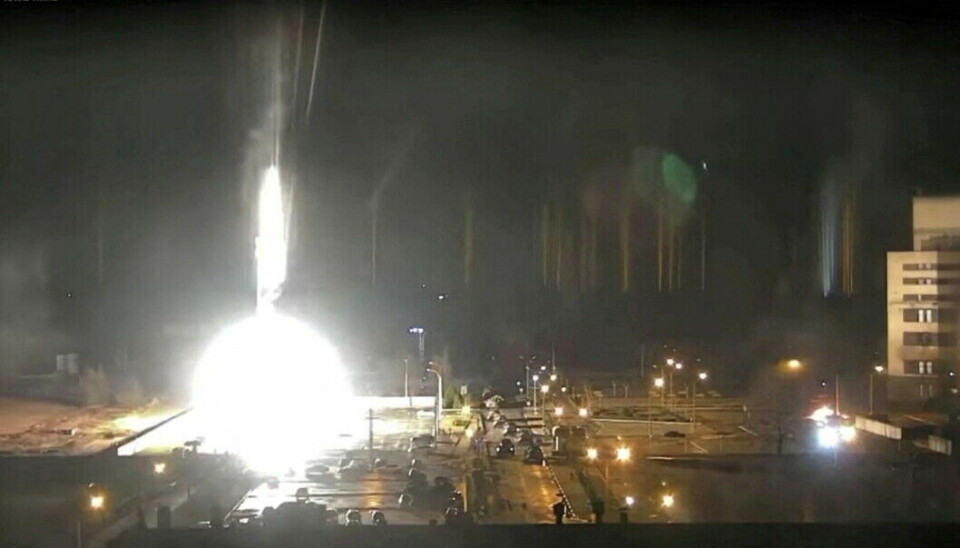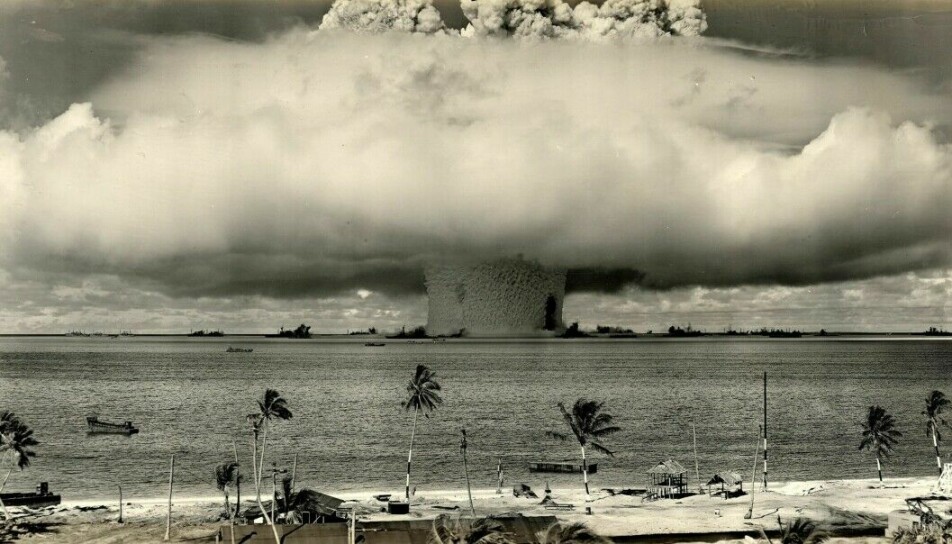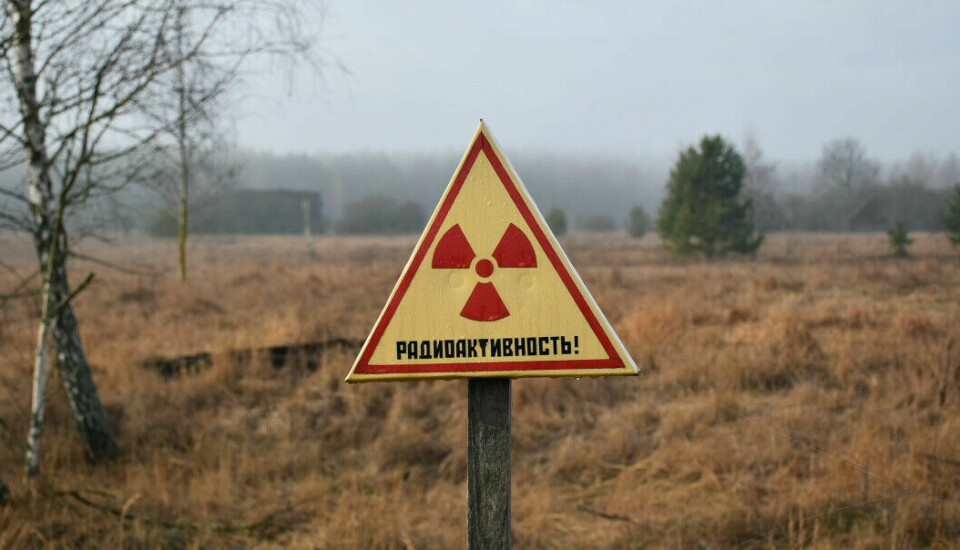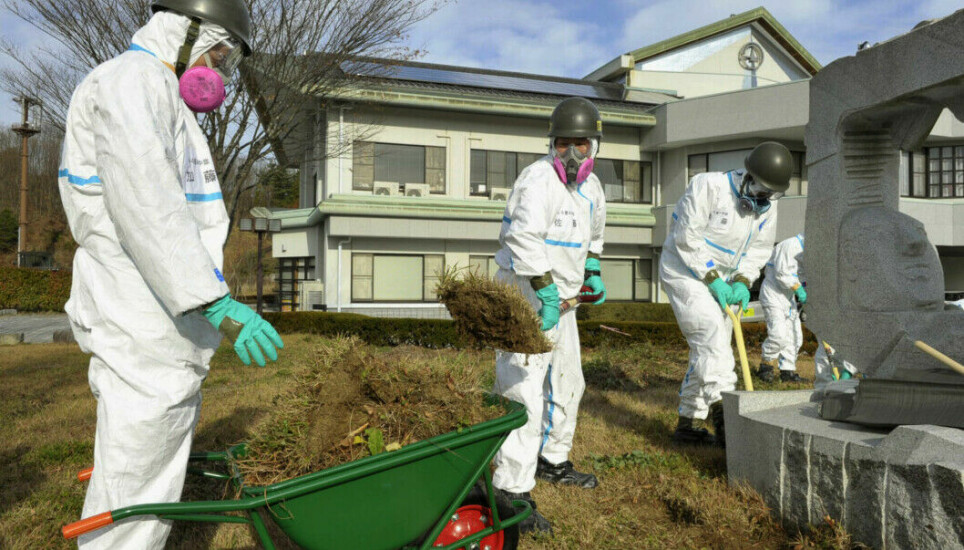
What should you do in the event of a nuclear disaster?
An atomic bomb explodes, or there is a meltdown in a nuclear reactor. What is it that actually harms people? And why should you stay inside for exactly two days?
The attack on Ukraine has once again raised fears that we will be hit by a nuclear disaster.
On the 24th of February 2022, Russian forces took control of the Chernobyl nuclear power plant in Ukraine. Just a week later, they attacked the power plant at Zaporizhzhia. There are now reports of power outages.
Meanwhile, we are haunted by the knowledge that Russia and other nations have thousands of nuclear weapons.
What happens if a bomb goes off or there is a meltdown in one of Ukraine's 15 nuclear reactors?
Everyone knows that such incidents can lead to dangerous radiation, but what exactly is radiation? How can it hurt us and why does it help to be inside for two days?
We spoke with Ingrid Dypvik Landmark, a senior adviser for the Norwegian Radiation and Nuclear Safety Authority, to find out more.
A meltdown would be worse than a bomb
“In principle, the same type of radiation will come from both atomic bombs and accidents in nuclear power plants,” Landmark says.
But there is a difference in the extent of the problem.
An atomic bomb is, of course, a disaster for those affected by the explosion itself. But when it comes to radiation over larger areas, meltdowns of nuclear power plants can actually be worse.
“Bombs emit very high amounts of radiation, but only for a short while,” says Landmark.
Radioactive substances will fall from the sky, but much of the emissions travel high up into the atmosphere, where it has less of an impact on us.
“We've seen this in test explosions. These explosions lead to local areas being polluted, but not to such an extent as we saw, for example, after the Chernobyl accident,” Landmark says.
When such a meltdown occurs, there may be greater emissions over a longer period of time. But what exactly is released during a meltdown?

Over a hundred radioactive substances
When an atomic bomb explodes, or there is a meltdown in a nuclear power plant, a cloud of dust and particles forms. It contains over a hundred different radioactive substances. If you are standing nearby, you will be exposed to enormous quantities of radiation.
However, many of these substances only have short lifespans.
A radioactive substance is essentially a substance in which the atoms are unstable. This means that they can be converted to another substance at any time. This is called decay.
When an atom decays, it emits a small dose of radiation.
In a radioactive substance with a short half-life, this happens quickly with almost all the atoms. Immediately, there is a lot of radiation, but soon most of the atoms have decayed and are no longer radioactive.
“Many of the radioactive substances from a bomb or a meltdown radiate for just a few seconds,” Landmark says.
“The problematic substances are those that have a long half-life.”
Can emit radiation for decades
In such problematic substances, each atom can last a long time – often years – before it decays and releases its radiation. There are a few substances, such as caesium-137 and strontium-90, that pose a big problem after a nuclear accident.
They will continue to emit radiation for decades after the incident.
Another problematic substance is radioactive iodine. It has a relatively short lifespan – the half-life is only eight days. However, the problem is that the substance is absorbed into the body and accumulates in the thyroid gland, which in turn increases the risk of cancer.
This can be prevented by taking a large dose of regular iodine before being exposed to the radioactive variant. By then, the thyroid gland is already filled up and will not absorb any of the radioactive iodine.
The authorities in Norway have therefore recommended everyone to buy iodine tablets that are intended to prevent radiation damage.
Both radioactive iodine and radioactive substances with longer lifespans can affect people in areas far from the accident site.
Radioactive cloud
The cloud of radioactive dust and particles from a meltdown will disperse into the air.
Large, heavy grains of dust will fall to the ground fairly quickly, but the lighter particles can be carried far away by the wind. This is how radioactive substances from the Chernobyl nuclear power plant ended up in Norway in 1986.

These radioactive clouds can be extremely dangerous and are worse the closer to the accident site you get.
Radiation from the radioactive particles can damage the DNA in our cells. The body is usually good at repairing such damage, but when there is a lot of radiation, the repair mechanisms fail to keep up.
This DNA damage can lead to cancer.
Therefore, it is very important to prevent the cells from being exposed to large amounts of radioactive particles. Fortunately, it is often possible.
Dangerous if it gets inside the body
“The radiation from a radioactive particle usually has a very short range,” Landmark says.
It is so short that you will not be harmed if the dust lands on the outside of your sweater. If it ends up on the skin, the chances of radiation poisoning are greater. But it only becomes really dangerous when the particles enter the body via the lungs, mouth, wounds, or mucous membranes.
There are several things you can do to prevent this from happening.
The first commandment is to get inside.
The radioactive particles behave like regular dust. They float in the air for a while before finally falling and settling on different surfaces.
It is thus important to get indoors before the cloud settles. Once inside, close all windows and vents, and turn off fans and ventilation systems so that as little dust as possible enters the house. The more you manage to seal your house, the less danger you will be in.
“We are often asked if you should tape any window cracks or stay in specific rooms in the house,” Landmark says.
Here in Norway, we do not have special advice on this, and people must consider such measures themselves. In the USA, where the advice also covers situations with high levels of radiation, the authorities recommend staying in the middle of the building or in the basement, as far as possible from external walls and ceilings.
But what if you do not have time to hide before the cloud comes? Or if for some reason you have to go outside?
Wash your skin, hair, and clothing
According to Landmark, it is still possible to protect yourself in such a situation.
“Covering the skin and hair will help,” she says.
Wearing a face mask will likely reduce the number of particles that enter the lungs. Upon entering the house, it is important to remove all clothing that has been exposed to radioactive particles.
“The contaminated clothes can be washed in a regular washing machine,” Landmark adds.
It is also advisable to wash your skin and hair thoroughly with soap and water. However, the CDC warns against the use of hair conditioner, as it can cause radioactive materials to cling to the hair.
According to the CDC, you can still use tap water. Although radioactive material can land on water surfaces or get into groundwater, the substances will be so diluted that it is safe to use the water to shower and do laundry.
“In Norway, the tap water will also be safe to drink,” Landmark says.

Long-term measures
The advice in Norway is to stay indoors for two days.
“During this time, the radioactive particles have either fallen and attached to soil, vegetation, roads, and buildings, or have been blown further away,” Landmark says.
At this point, it is safe to breathe in the air again.
But the radioactive substances are not gone.
In the early days, there will still be radioactive dust on many surfaces outside. It is therefore important to avoid contact with such exposed surfaces. Eventually, however, the particles will be washed into the soil.
From the soil, the radioactive particles will be absorbed by all kinds of plants, including edible ones. Radioactive substances will soon be transferred to grazing animals. In this way, we humans can once again be exposed through food.
“It has been shown that radioactive iodine can be found in cow's milk already a week after a nuclear incident,” Landmark says.
The immediate measures to protect life and health must therefore be followed up by long-term measures to monitor radiation in food and to prevent pollution in food production.
“Reindeer meat is still checked after the accident in Chernobyl,” Landmark says.
Poses little danger for Norway
“In a situation with large emissions, it would also be relevant with measures such as flushing surfaces and covering sandboxes. After the accident in Fukushima, part of the land was removed and replaced with new land,” says Landmark.
But such drastic measures will only be necessary if the fallout is very large. The population would have to be evacuated, and measures implemented before they could return.
According to Landmark, such a situation is unlikely to arise from an accident in Ukraine. The power plants are far too far away.
In the event of a major accident, where the wind is directed towards Norway, there may be a small increase in the levels of radioactivity, but not so much that it will constitute an immediate health hazard.
According to information from the Norwegian Radiation and Nuclear Safety Authority, it is very unlikely that we in Norway would need to take iodine tablets or stay indoors if there is an accident in Ukraine.
When the health authorities still recommend that we be prepared for a nuclear accident, it is first and foremost because nuclear-powered ships move up and down the coast of our country.
———
Translated by Alette Gjellesvik.
Read the Norwegian version of this article on forskning.no
































